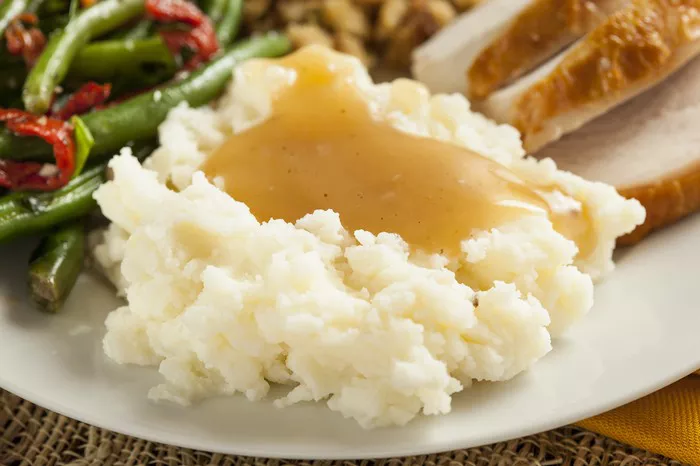Potatoes are a beloved and versatile vegetable enjoyed by people around the world. They can be baked, boiled, mashed, fried, or roasted, offering a wide range of delicious possibilities. However, if you have diabetes, you may have heard conflicting information about whether potatoes are a suitable food choice for you. As a diabetic, understanding how different foods impact your blood sugar levels is crucial for managing your condition effectively. In this article, we’ll explore the health implications of potatoes for diabetics and provide valuable insights to help you make informed decisions about including potatoes in your diet.
Understanding Diabetes and Blood Sugar
Before delving into the relationship between potatoes and diabetes, it’s essential to understand diabetes and how it affects blood sugar levels.
Diabetes is a chronic condition characterized by elevated blood glucose (sugar) levels due to the body’s inability to produce or use insulin effectively. Insulin is a hormone produced by the pancreas that helps regulate blood sugar levels by allowing glucose to enter cells for energy. In individuals with diabetes, this process is impaired, leading to higher blood sugar levels.
There are two main types of diabetes:
Type 1 Diabetes: This is an autoimmune condition where the body’s immune system attacks and destroys the cells in the pancreas that produce insulin. People with type 1 diabetes require insulin injections to manage their blood sugar levels.
Type 2 Diabetes: This is the most common form of diabetes and is often associated with lifestyle factors such as obesity, physical inactivity, and poor diet choices. In type 2 diabetes, the body becomes resistant to the effects of insulin, leading to elevated blood sugar levels.
The Glycemic Index (GI) of Potatoes
The glycemic index (GI) is a ranking system that measures how quickly carbohydrate-containing foods raise blood sugar levels. Foods with a high GI are digested and absorbed quickly, causing rapid spikes in blood sugar levels. Foods with a low GI are digested and absorbed more slowly, resulting in gradual and more stable increases in blood sugar.
The GI of potatoes can vary depending on factors such as the type of potato, how it’s cooked, and what it’s consumed with. Generally, potatoes have a high GI, which means they can cause a significant increase in blood sugar levels.
For example, boiled white potatoes have a GI value of around 82, while baked sweet potatoes have a lower GI value of around 70. However, keep in mind that individual responses to food can vary, and factors such as fiber content, fat content, and other components of the meal can influence the overall impact on blood sugar.
1. Potatoes and Blood Sugar Management
For diabetics, managing blood sugar levels is crucial to prevent complications and maintain overall health. As mentioned earlier, potatoes have a high GI, which means they can cause rapid spikes in blood sugar levels when consumed in larger quantities or in combination with other high-GI foods.
For individuals with diabetes, portion control and food pairing become essential strategies for including potatoes in their diet. Smaller portions of potatoes, especially those that are less processed and have a lower GI, can be incorporated into balanced meals that also include sources of protein, healthy fats, and fiber. Protein and fat can slow down the absorption of carbohydrates, which can help mitigate the impact of high-GI foods on blood sugar levels.
2. Types of Potatoes
The type of potato you choose can also influence its impact on blood sugar levels. As mentioned earlier, sweet potatoes generally have a lower GI compared to white potatoes. Sweet potatoes are a nutritious option as they are rich in fiber, vitamins, and minerals, including vitamin A and potassium.
Purple potatoes, which are less common but becoming more available, have been found to have a lower GI than white potatoes. These colorful potatoes contain beneficial antioxidants and can be a more diabetes-friendly choice.
3. Preparation Methods
The way potatoes are prepared can significantly impact their GI. Boiling or steaming potatoes results in a lower GI compared to frying or baking them. When potatoes are cooked at high temperatures, such as frying, the starches in the potatoes undergo changes that increase their GI.
It’s worth noting that when potatoes are eaten as part of a mixed meal containing other macronutrients, the overall GI of the meal may be lower than when the potatoes are consumed alone.
4. Glycemic Load (GL)
Another concept to consider in managing blood sugar levels is the glycemic load (GL). The glycemic load takes into account both the GI and the portion size of a food, providing a more comprehensive understanding of how a specific food impacts blood sugar levels.
To calculate the GL of a food, you multiply the food’s GI by the grams of carbohydrates in a serving and then divide by 100. A lower GL indicates a smaller effect on blood sugar levels.
5. Balanced Meal Planning
For diabetics, including potatoes as part of a balanced meal is key to managing blood sugar levels. Consider the following tips when incorporating potatoes into your diet:
Control Portion Sizes: Be mindful of portion sizes, as consuming large quantities of high-GI foods can cause significant blood sugar spikes. Aim for smaller servings of potatoes and balance them with other nutrient-rich foods.
Pair with Protein and Healthy Fats: Combining potatoes with a source of protein and healthy fats can slow down the absorption of carbohydrates, reducing the impact on blood sugar levels. For example, pair potatoes with grilled chicken, fish, or a plant-based protein source and add a drizzle of olive oil or avocado slices.
Choose Lower-GI Varieties: Opt for sweet potatoes, purple potatoes, or boiled/steamed potatoes to lower the overall impact on blood sugar.
Add Fiber: Fiber-rich foods, such as vegetables, fruits, and whole grains, can help stabilize blood sugar levels and improve overall glycemic control. Incorporate a variety of high-fiber foods into your meals.
Monitor Blood Sugar Levels: Regularly monitor your blood sugar levels to understand how different foods, including potatoes, affect your body. This information can help you make informed decisions about your diet and manage your diabetes effectively.
Conclusion
Potatoes can be a part of a healthy and balanced diet for individuals with diabetes. However, because of their high glycemic index, portion control and food pairing are essential considerations to manage blood sugar levels effectively.
Choose lower-GI potato varieties, prepare them using cooking methods that result in a lower GI, and balance your meals with protein, healthy fats, and fiber-rich foods. Remember that individual responses to foods can vary, so it’s essential to monitor your blood sugar levels regularly and consult with a registered dietitian or healthcare professional for personalized guidance.
By approaching your diet thoughtfully and making informed choices, you can enjoy the nutritional benefits of potatoes while managing your diabetes and supporting your overall health and well-being.


























